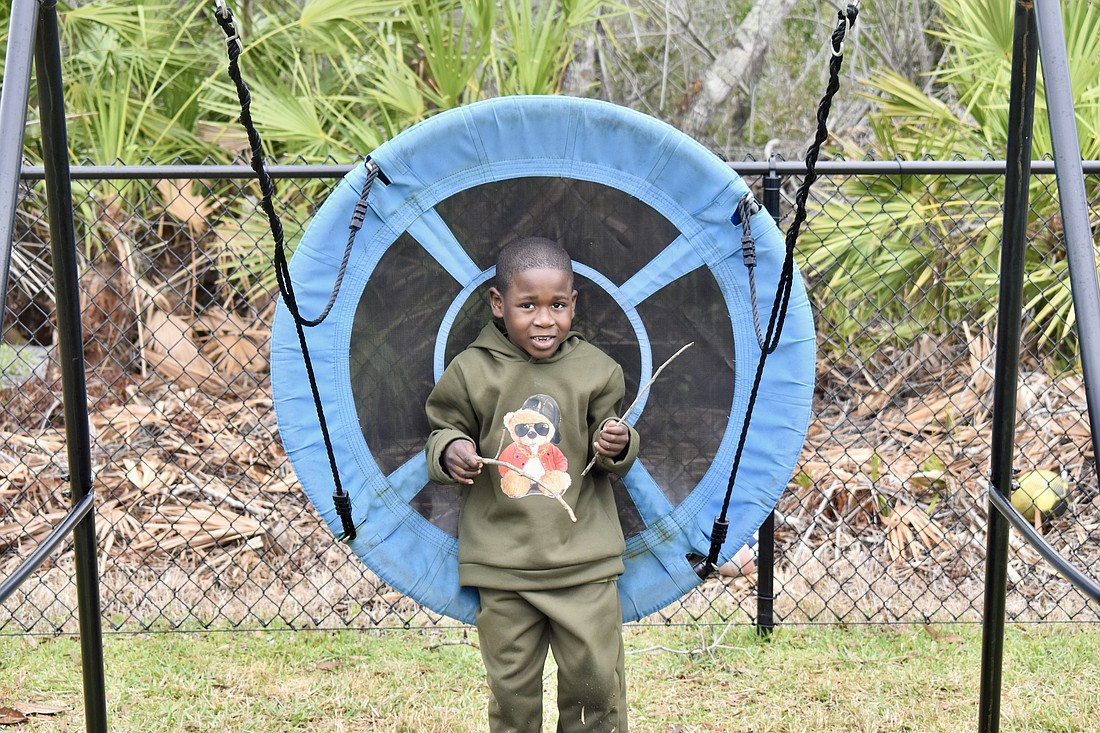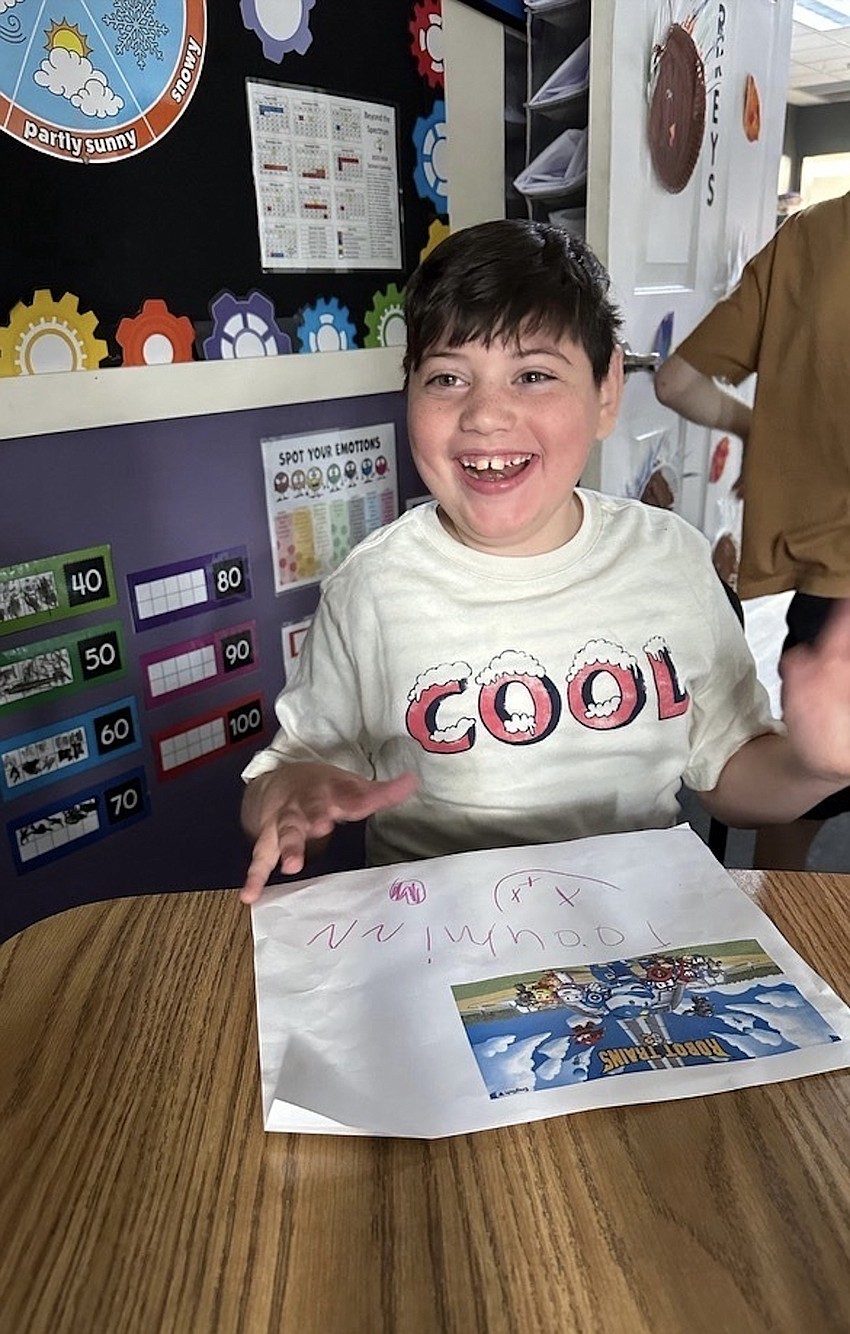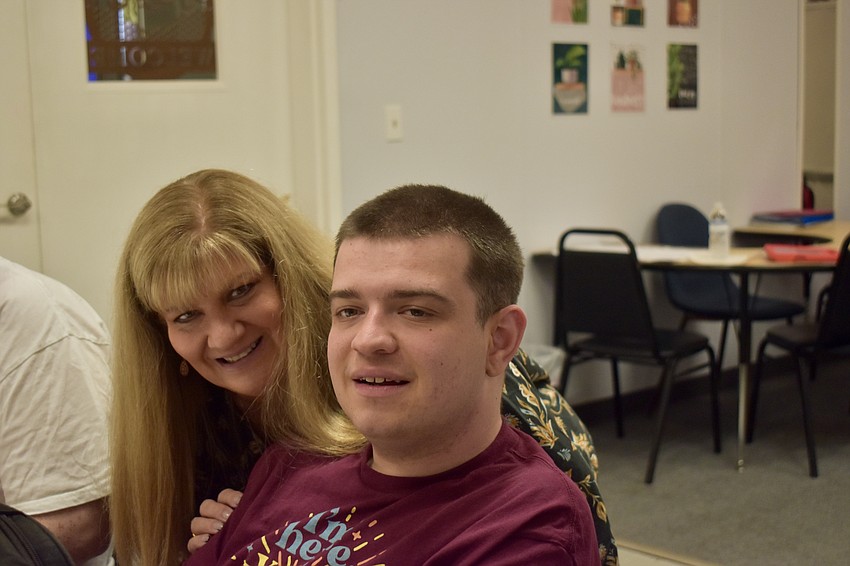- November 23, 2024
-
-
Loading

Loading

Jill Hamm knew she wanted to move her family from Illinois to Florida, but wasn’t sure of the exact location.
“One of the reasons that we chose Bradenton was because of Beyond the Spectrum,” Hamm said. “We toured a couple other schools, and then when we actually went into that school, it was a night-and-day environmental difference. You could just feel how much they loved their students straight off the bat (at Beyond the Specturm).”
Lakewood Ranch's Beyond the Spectrum enrolls students with other intellectual and developmental disabilities, as well.
Hamm’s 12-year-old son, Truman, has a dual diagnosis of congenital muscular dystrophy and lissencephaly. Lissencephaly means “smooth brain.” The natural bumps and folds in the cerebral cortex are absent.

Truman in his third year at Beyond the Spectrum. Since enrolling, Jill Hamm says the biggest improvement she’s seen is in his conversational skills.
“Truman’s very vocal. He would talk, talk, talk and kind of say the same thing over and over again,” Hamm said. “Now, you can ask him, ‘What did you do today,’ and he will tell you what he did. “What friends did you see?’ and he will tell you the names of the kids in his class, which did not happen prior to him going there.”
Success doesn’t entirely depend on academics at Beyond the Spectrum. Students are working on life skills, too.
“The ABCs take care of the child’s anxiety first, behaviors that might come from those anxieties, and then, we work on the curriculum,” Executive Director Lora Carpenter said. “If that child is coming out of his or her seat, unable to concentrate or unable to function because of a screaming friend or lights that are too bright, if we can’t fix that, (the student) is not going to be able to sit and concentrate and learn.”
The school has an Applied Behavior Analysis clinic on-site. ABA therapy focuses on replacing maladaptive behaviors with appropriate behaviors using repetition. It’s an intensive therapy and children can spend up to 40 hours a week in the clinic.
The clinic currently has 37 students, and 80 students are enrolled in the school. Because of one-on-one therapy and teacher-student ratios of no more than 4 to 1, the staff is a tight-knit team of 74.
Sarah Bass is the director of the Early Learning Center and has been with the school for over 10 years, which isn’t uncommon among the staff.
“We have such a family environment here,” Bass said. “Being here and seeing the changes that we make every day, it’s exciting and makes it worth it.”
Hamm said every member of the staff knows Truman, and she has the number of Truman’s teacher in her phone.
“I can text her at any time if I have a question, and she responds straight away,” Hamm said. “He has muscular dystrophy and had a big surgery in September. We got calls and messages nonstop while he was out for those two weeks.”
Truman was walking on his own when he first enrolled. As time went on, he started using a walker at school, then a wheelchair. Hamm said his level of care and education never changed, a contrast from her experience with Illinois public schools where she said the child had to be tailored to the program versus tailoring the program to the child.
Laura Ryan-Leverett started working at Beyond the Spectrum right out of college in 2012. She’s the curriculum resource director. When a teacher needed a motivational tool for a student who had an affinity for garage door openers, Ryan-Leverett came back with a garage door opener.
“It’s nice because I feel like not many other schools have that position of just getting the teachers what they need,” she said.

Students can enroll at 5 years old and stay on through adulthood. The adult program is in the early stages, but it’s an active group called H.I.V.E., helping individuals through vocation and enrichment.
The HIVE students are rarely on campus because they’re off job training or taking a dance class. Right now, the oldest student is Carpenter’s son Scotty, who just turned 27. He started at the school when he was 10.
Parents and caregivers are also offered support through monthly breakfasts, where they can make and meet friends.
“It’s nice to have that camaraderie with somebody else who knows exactly what you’re going through,” Hamm said. “You get deep on a totally different level just because of what our lives entail.”
The programs span from early education through high school and cost between $15,500 and $18,300 annually per student, but scholarships are available. Hamm said the staff walked her through the application process.